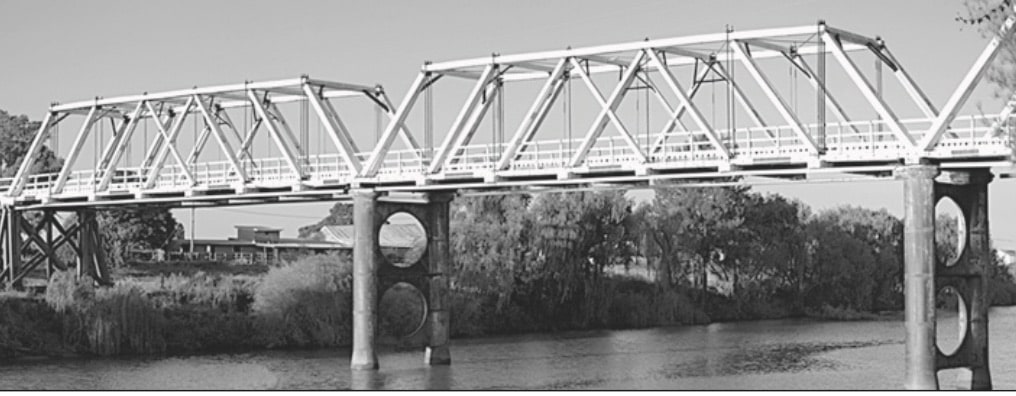Two piers from different eras, used to support civil structures, are shown. Outline how innovations in engineering materials have improved the inservice properties of piers. (2 marks) --- 5 WORK AREA LINES (style=lined) ---
ENGINEERING, CS 2023 HSC 2 MC
Why did steel replace cast iron in bridges built after 1850 ?
- It is lighter in weight.
- It is easier to produce.
- It has greater tensile strength.
- It has greater compressive strength.
ENGINEERING, CS 2017 HSC 13 MC
An image of an Allen truss bridge is shown.

Which of the following correctly identifies the loading conditions of an Allen truss bridge?
- Timber members in shear and steel members in torsion
- Timber members in torsion and steel members in shear
- Timber members in tension and steel members in compression
- Timber members in compression and steel members in tension
ENGINEERING, CS 2019 HSC 16 MC
ENGINEERING, CS 2019 HSC 11 MC
The table shows materials that have been used to build civil structures over time.
Which row of the table shows the use of the materials in the correct historical order?